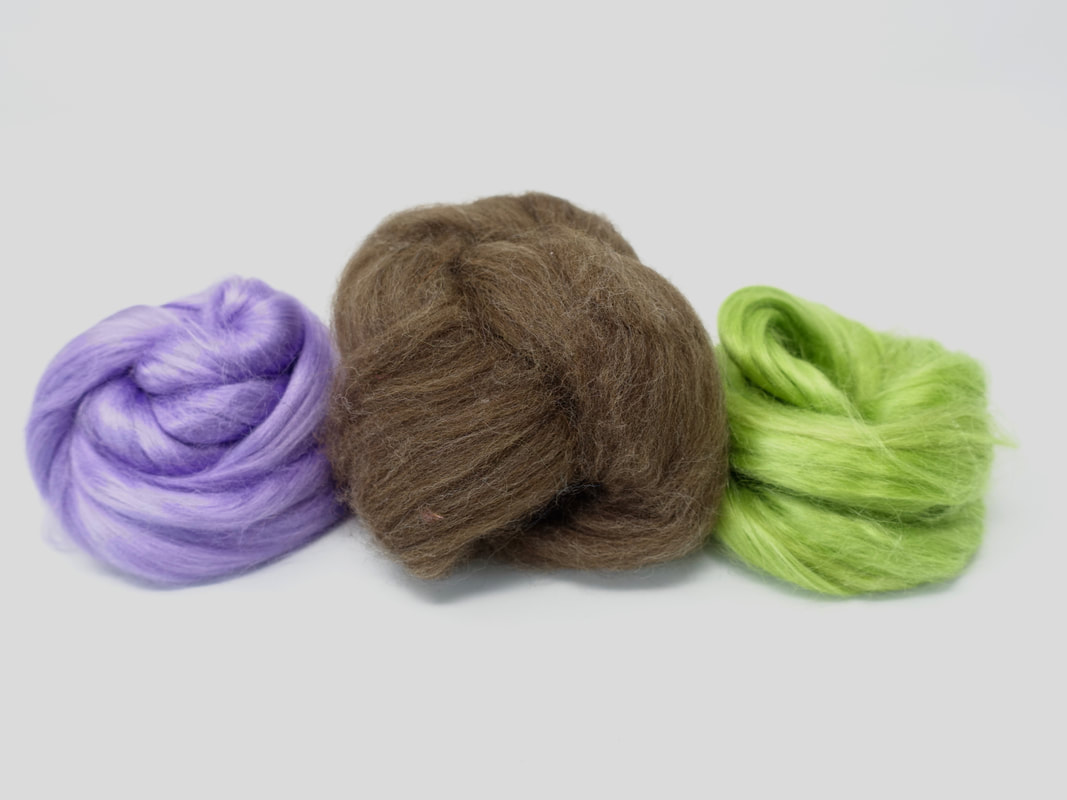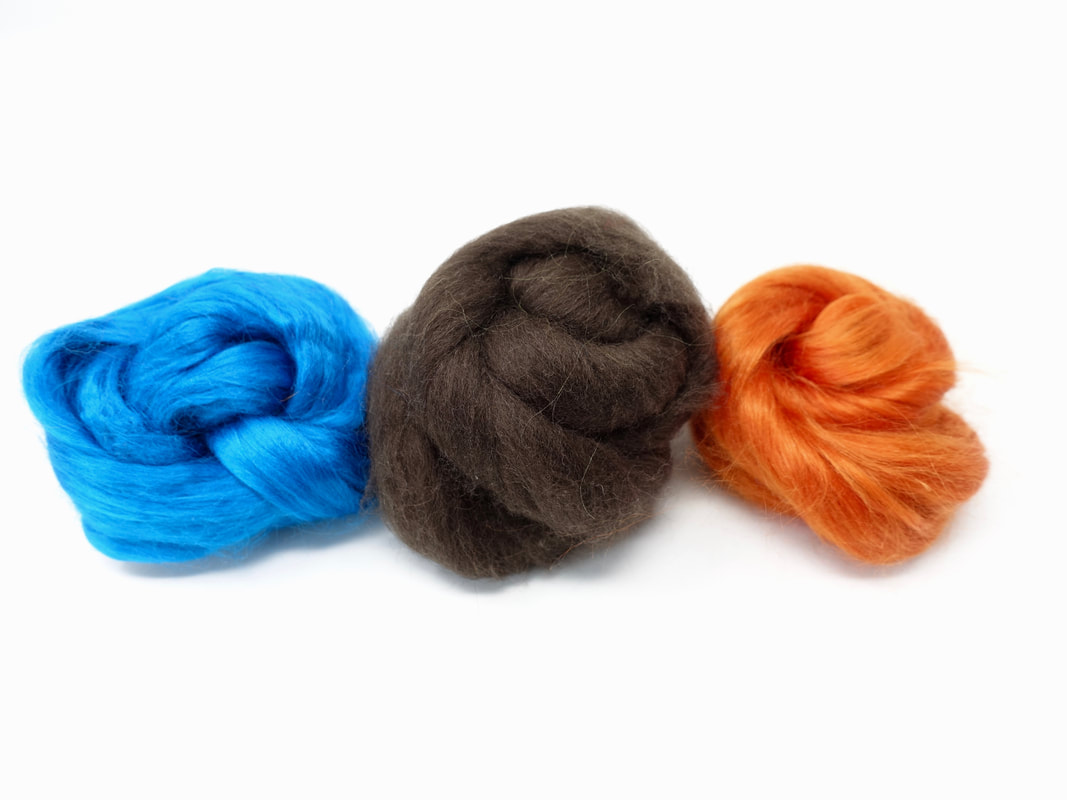|
If you've not received your parcel yet, then look away now! Are are the videos and fibre information to go alongside the June round of the Non-Wool Club. The spare fibre from previous rounds is now live in the Non-Wool section of the shop if any of the previous videos have wetted your appetite to try these fibres. We're on to a new 3 month block of this club, some fibres are ones we encountered last time, but others are brand new. I've started off with Viscose. This is a shiny fibre, in many ways similar to silk, but it's a manufactured cellulose fibre. The plant material is turned in to a pulp, and then forced through fine jets producing the fine stapled fibre. You may also see this fibre described as Rayon. The smooth, shiny nature of the fibres produces a yarn with very little memory or bounce so I think it's best suited to being spun more finely. I prefer to spin it straight from the end of the length of top to produce maximum shine, but you may like to try spinning it from the fold if you're struggling with the fibres getting away from you. The amount of twist will depend on your intended use, knitting yarns can use much less twist, but if you plan on weaving with it them add more twist as it will suffer from abrasion from the heddles and reed. The next fibre in this round of parcels is Ramie. This is another cellulose plant fibre, but not a manufactured fibre, this is a traditional base fibre like Linen (Flax) or Hemp. It comes from the nettle family; Boehmeria Nivea and Boehmeria Tenacissima. These plants grow incredibly quickly, they can reach a heigh of 2 or 3 metres and be harvested several times in a single year. When linen is processed you can remove the outer stem by hitting it, but this isn't possible with ramie. The inner stem is instead treated with lye (the same chemical used to make soap) and that dissolves the pulpy material, leaving behind the fibrous vascular bundles. The fibre is then combed to make the length of top we are spinning from. The fibre has a long staple length and develops a beautiful lustre when spun. Be sure to keep your hands well spaced, and don’t use too much twist or you’ll end up with string. This fibre blends beautifully and evenly and adds strength to your finished yarn. You can spin this one from the fold but it really does lead to a slightly hairy yarn, rather than one with beautiful smoothness and shine. It works better when spun more finely as it has no memory or bounce, but it does drape beautifully, and as with all bast fibres the more you handle and work it the softer it becomes. The final fibre is a new one for the club. Yak down is a very fine stapled fibre, at 17-19 microns this is nearly as soft as cashmere, and with many similar properties though is slightly shorter in staple length. The yak is collected when the animals moult, and is then commercially dehired to remove the diff guard hairs leaving behind the soft undercoat. The short staple length will be your biggest battle with this fibre, if you try to use a short forward draw you will continually feel as if you are having to grasp the fibres for grim death to stop them getting away from you. Switch to a point of twist draft and it will all become much easier. Don't panic if your yarn isn't super even, plying will make a huge difference to the final yarn. You can use lots of twist with this fibre, in fact lack of twist will produce a yarn that is likely to pill very quickly. If you over-ply your yarn slightly you will increase the bounce and memory, making this yarn ideal for things like hats and cowls. It will work well when spun more thickly, though thinner yarns are also beautiful in fibres of this type. Comments are closed.
|
Archives
January 2024
Categories
All
|
Hilltop CloudHilltop Cloud- Spin Different
Beautiful fibre you'll love to work with. Established 2011 VAT Reg- 209 4066 19 Dugoed Bach, Mallwyd, Machynlleth,
Powys, SY20 9HR |





 RSS Feed
RSS Feed


